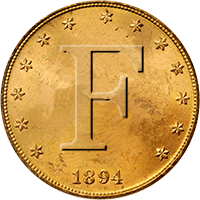Since I don't have space for a test garden I decided to go to an old park and do some testing.
First I dug a couple of three inch plugs. I placed various coins at the bottom, replaced the plugs and then checked to see where they showed up on both smart screen and digital. Conductivity numbers were very consistent, but the ferrous numbers tended to move around depending on which direction I was heading when I approached the coil (I checked them out from the 4 main compass points).
Next still using the 3" holes I started messing around with the gain, variability and threshold limits. My purpose was to find a level that would let me consistently distinguish between memorial cents and dimes, and also to get a good (and identifiable by me) high silver tone. I used a memorial cent, clad dime, mercury dime, and a silver washington quarter for this part of the test. I finally settled on gain at 10 and threshold also at 10. That gave me a super high pitched tone on the silver coins.
Next, I dug a 9" hole (Measured), and started experimenting with sensitivity settings. For this series I used a morgan dollar, a franklin half, a silver quarter and a mercury dime.
I figured out real quick that in our ground I've got to use manual sens to get any depth at all. The silver dollar was no problem. The SE locked on to it all the way down to a manual sens of 16. The half dollar was almost as good. I could get to a manual sens of 18 before I started to lose that signal. The quarter was not good at all. I had to get manual sens up to 26 before I could even get a chirp that I might consider digging. Even then it wouldn't lock on and it bounced all over the screen. The merc was a total washout. I couldn't even get a hint of a signal even with manual sens up to 32. I tried it with deep on and deep off. I swung the coil slow and then a bit quicker, even trying the "minelab wiggle" but I never got the dime to register.
I wasn't real happy but at least I've kinda figured out the sens settings and expected depths for this area (our ground is extremely mineralized), and did get to see how a very deep quarter reacts.
First I dug a couple of three inch plugs. I placed various coins at the bottom, replaced the plugs and then checked to see where they showed up on both smart screen and digital. Conductivity numbers were very consistent, but the ferrous numbers tended to move around depending on which direction I was heading when I approached the coil (I checked them out from the 4 main compass points).
Next still using the 3" holes I started messing around with the gain, variability and threshold limits. My purpose was to find a level that would let me consistently distinguish between memorial cents and dimes, and also to get a good (and identifiable by me) high silver tone. I used a memorial cent, clad dime, mercury dime, and a silver washington quarter for this part of the test. I finally settled on gain at 10 and threshold also at 10. That gave me a super high pitched tone on the silver coins.
Next, I dug a 9" hole (Measured), and started experimenting with sensitivity settings. For this series I used a morgan dollar, a franklin half, a silver quarter and a mercury dime.
I figured out real quick that in our ground I've got to use manual sens to get any depth at all. The silver dollar was no problem. The SE locked on to it all the way down to a manual sens of 16. The half dollar was almost as good. I could get to a manual sens of 18 before I started to lose that signal. The quarter was not good at all. I had to get manual sens up to 26 before I could even get a chirp that I might consider digging. Even then it wouldn't lock on and it bounced all over the screen. The merc was a total washout. I couldn't even get a hint of a signal even with manual sens up to 32. I tried it with deep on and deep off. I swung the coil slow and then a bit quicker, even trying the "minelab wiggle" but I never got the dime to register.
I wasn't real happy but at least I've kinda figured out the sens settings and expected depths for this area (our ground is extremely mineralized), and did get to see how a very deep quarter reacts.


